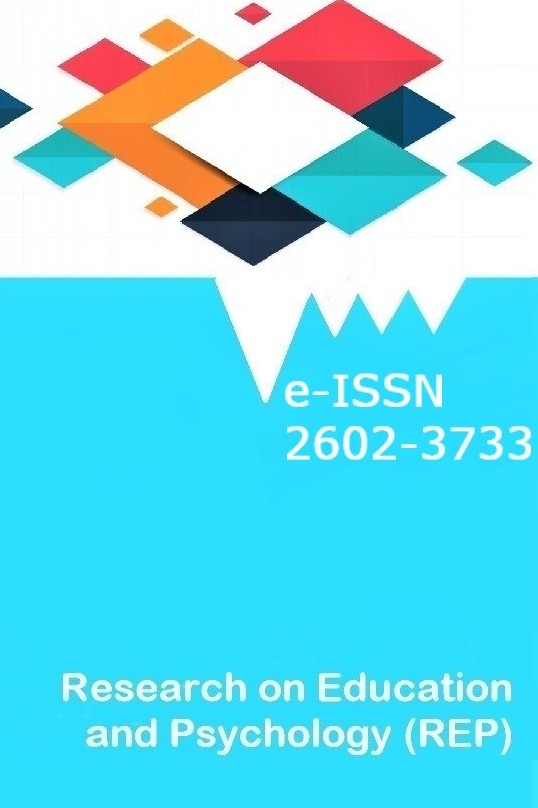What Should an Ideal Pre-Service Mother-Tongue Teacher Look Like?
What Should an Ideal Pre-Service Mother-Tongue Teacher Look Like?
___
- Arnon, S., & Reichel, N. (2007). Who is the ideal teacher? Am I? Similarity and differences in perception of students of education regarding the qualities of a good teacher and their qualities as teachers. Teachers and Teaching: Theory and Practice, 13(5), 441-464.
- Berg, K. E., & Latin, R. W. (2008). Essentials of research methods in health, physical education, exercise science, and recreation. Lippincott Williams & Wilkins.
- Boonen, T., Van Damme, J., & Onghena, P. (2014). Teacher effects on student-achievement in first grade: Which aspects matter most? School Effectiveness and School Improvement, 25(1), 126-152. https://doi.org/10.1080/09243453.2013.778297
- Bullock, S. M. (2015). Finding my way from a teacher-to-teacher educator: Valuing innovative pedagogy and inquiry into practice. In T. Russell & J. J. Loughran (Eds.), Enacting a pedagogy of teacher education: Values, relationships, and practices. Routledge.
- Çetin, S. (2001). Ideal öğretmen üzerine bir araştırma [A study on an ideal teacher]. Milli Eğitim Dergisi [National Education Journal], 149, 19-21., 149, 19-21.
- Douna, P., Kyridis, A., Zagkos, C., Ziontaki, Z., & Pandis, P. (2015). The ideal university teacher according to the views of Greek students. International Journal of Higher Education, 4(20), 145-158. https://doi.org/10.5430/ijhe.v4n2p145
- Durukan, E., & Maden, S. (2011). Türkçe öğretmeni adaylarının Türkçe öğretmenliği lisans programına yönelik görüşleri [Turkish pre-service teachers’ views about Turkish teaching undergraduate curriculum]. Kastamonu Eğitim Dergisi [Kastamonu Education Journal], 19(2), 555-566.
- Giorgi, A. (1997). The theory, practice, and evaluation of the phenomenological method as a qualitative research procedure. Journal of Phenomenological Psychology, 28(2), 235-260.
- Gopal, R., & Singh, C. K. S. (2020). Arising reading patterns in understanding literary texts. Studies in English Language and Education, 7(2), 407-420.https://doi.org/10.24815/siele.v7i2.16663
- Harley, K., Bertram, F. B. C., Mattson, E., & Pillay, S. (2000). “The real and the ideal”: Teacher roles and competencies in South African policy and practice.International Journal of Educational Development, 20, 287-304. https://doi.org/10.1016/S0738-0593(99)00079-6
- Ko, J., & Sammons, P. (2013). Effective teaching: A review of research and evidence.CfBT Education Trust
- Küçükahmet, L., Külahoğlu, Ş. Ö., Güçlü, N., Çalık, T., Topses, G., Öksüzoğlu, A. F., & Korkmaz, A. (1999). Öğretmenlik mesleğine giriş [Introduction to the teaching profession]. İstanbul: Alkım Yayınevi.
- MEB (2017). General competencies of the teaching profession. Ankara: General Directorate of Teacher Training and Development.
- Otacıoğlu, S. G. (2010). Müzik öğretmeni adaylarının okul deneyimi II uygulama dersine ilişkin tutumları [Attitudes of Music Teacher Candidates Towards School Experience II]. Pamukkale University Education Faculty Journal, 28(28), 81-90.
- Pozo-Muñoz, C., Rebolloso-Pacheco, E., & Fernández-Ramírez, B. (2000). The ‘ideal teacher’: Implications for student evaluation of teacher effectiveness. Assessment & Evaluation in Higher Education, 25(3), 253-263. https://doi.org/10.1080/02602930050135121
- Rose, P., Beeby, J., & Parker, D. (1995). Academic rigor in the lived experience of researchers using phenomenological methods in nursing in nursing. Journal of Advanced Nursing, 21(6), 1123-1129.
- Rusu, C., Şoitu, L., & Panaite, O. (2012). The ideal teacher. Theoretical and investigative approach. Procedia-Social and Behavioral Sciences, 33, 1017-1021.
- Singh, C. K. S., Mostafa, N. A., Mulyadi, D., Madzlan, N. A., Ong, E. T, Shukor, S. S., & Singh, T. S. M. (2021). Teacher educators’ vision of an ‘ideal’ teacher. Studies in English Language and Education, 8(3), 1158-1176.
- Sztejnberg, A., den Brok, P., & Hurek, J. (2004). Preferred teacher-student interpersonal behavior: Differences between Polish primary and higher education students’ perceptions. Journal of Classroom Interaction, 39(2), 32-40.
- Tekindal, M., & Uğuz Arsu, Ş. (2020). Nitel araştırma yöntemi olarak fenomenolojik yaklaşımın kapsamı ve sürecine yönelik bir derleme [A revıew on the scope and process of phenomenologıcal approach as a qualıtatıve research method.]. Ufkun Ötesi Bilim Dergisi [Beyond the Horizon of Scientific Journal], 20 (1), 153-172.
- Yıldırım, A. & Şimşek, H. (2016). Sosyal bilimlerde nitel araştırma yöntemleri. Ankara: Seçkin. Qualitative research methods in social sciences. Ankara: Seçkin.
- Yunus, M. D., Thambirajah, V., Mohd Said, N. E., & Singh, C. K. S. (2021). Designing a module as a strategic solution to enhance creativity in the teaching of writing. International Journal of English Language and Literature Studies, 10(2), 94-104.
- Yayın Aralığı: Yılda 4 Sayı
- Başlangıç: 2017
- Yayıncı: Bülent DİLMAÇ
Duygu DİNÇER, Emine Burcu TUNÇ
Examining Parental Alienation Syndrome Behaviors in Divorce, Custody and Personal Relationship Cases
Mathematics on News: How do Students Interpret Percentages in Daily Life Situations?
Ihsan Hilmi Alantar and Child Welfare in Early Republican Türkiye
Cansu ÇELİK ÖZKEZ, Zeynep ÇAKMAK GÜREL
Evaluation of Psychological Help Needs, Stress and Hopelessness Among Postgraduate Students
